One of the most important things you’re ever going to do is prepare and store food.
It’s essential to survival, and storing food improperly could spell an early end to an otherwise successful survival era.
I don’t want you to ever have to use this, but if you do, it’s important to know the difference between properly stored food, and something you should just not eat.
- What Types of Foods are Ideal for Long-Term Storage?
- What Are Some Foods That Literally Never Spoil?
- Food Preservation Methods
- Is Cooling and Freezing a Risky Idea in an Emergency Situation?
- How Effective is Vacuuming at Preserving Food?
- What is the Best Method to Preserve Nutrients Such as Vitamins or EFA?
- Preserving Your Future
Prepper food storage is imperative to survival. I’m going to show you how it’s done. We’re going to go through foods that don’t spoil, long-term storage, preservation methods, and so much more. Let’s get you prepared.
What Types of Foods are Ideal for Long-Term Storage?
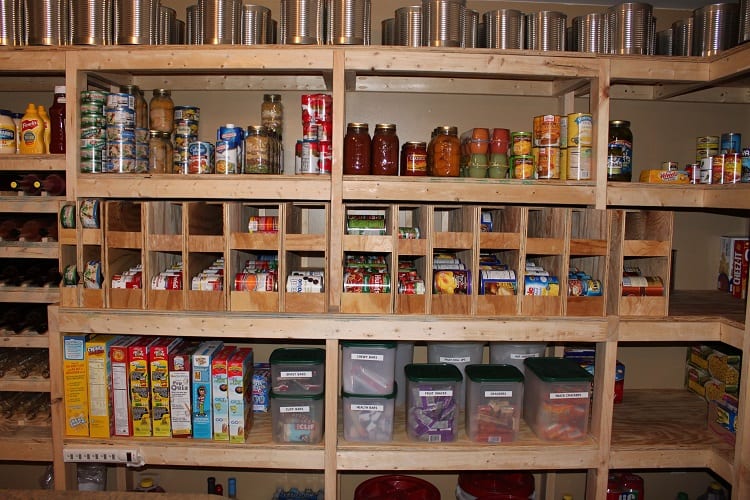
We’ll get into a specific list of foods shortly, but just know that the lower the moisture content, the longer the food will last.
As we’ve seen with pemmican (which can last for a century), triglycerides are also an excellent spoilage-preventing barrier that you can use to keep food for an exceptionally long time.
If it’s dry, sealed, and in a proper temperature, it will last a long time. Low moisture content food is what you want to go with nine times out of ten (because dehydrating and freeze drying is a pain in the rear end).
What Are Some Foods That Literally Never Spoil?

This is a hard and fast list of some of the best foods for long-term storage. If you don’t particularly enjoy some of these foods, you might want to change your palate and get used to them.
- White Rice
- Dried Pasta (Not Homemade)
- Instant Soup Mix
- Beef Jerky (Store-Bought or Homemade)
- Protein Bars (W/ Honey)
- Canned Goods
- Sugar (Stored Dry)
- Honey
- Powdered/Dehydrated Milk
- Dried Oats
- Baby Formula
- Instant Potatoes
These aren’t the only ones out there, but these dozen foods will serve you wonderfully in storage.
You can use honey in oats, soup mix in instant potatoes, and just about anything on dried pasta. The possibilities aren’t exactly endless, but there are plenty of meals you can make with these foods that take ages to spoil.
Food Preservation Methods
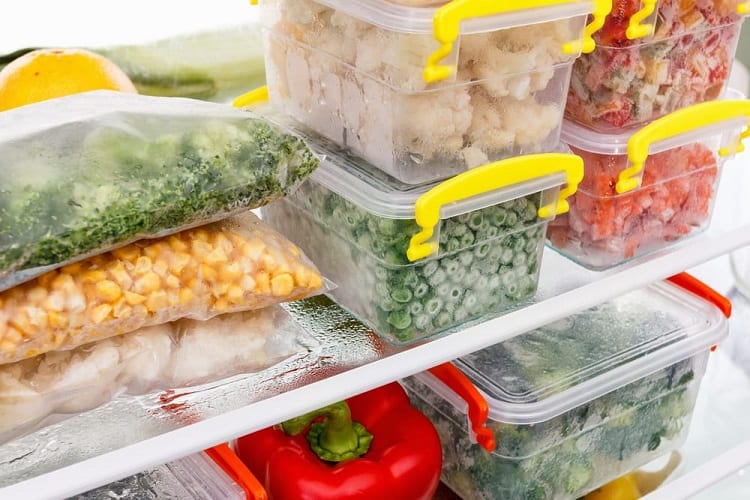
You have plenty of preservation routes you could take. While it seems counterintuitive to focus on more than one, trust me when I say that you’re going to need the dietary morale.
We can all picture ourselves surviving, but eating the same food every day can make you feel down in the dumps. Using multiple methods will help diversify the flavors in your diet.
Curing
Curing food works well if you have the salt supply to manage it. Traditionally, kosher salt or sea salt will work well. Curing is a method used for meats: you salt the meat, draw the moisture out, and dually produce an inhospitable environment for bacterial growth.
When you salt meats for curing, you hang them up to dry so that air can hit it from all sides and help draw out that moisture.
This is one of the oldest preservation methods available, and while it’s not the most-used method anymore thanks to technological advancements, this is excellent to make jerky or cure fresh-caught meats from the hunt.
Cooling
The refrigerator is your friend, especially when it comes to preserving food. Yes, that’s common knowledge since we all have refrigerators, but because it’s so integrated into our daily lives it’s easy to forget just how useful and powerful they are.
Your refrigerator can extend the life of most garden vegetables by up to three weeks as opposed to storing them dry, it can make onions and potatoes last for months, and we all know it preserves fresh meats and expirable foods.
Refrigeration slows microorganism growth that causes food spoilage, and while it doesn’t have the same effectivity as freezing, it works wonders for most foods.
Freezing
Freezing delays the growth of bacteria, and then grinds it to a screeching halt. In the fridge, the water in your food is still fluid, meaning it can harbor bacterial growth.
By using the freezer and turning that water into ice crystals, which are cold enough that bacteria cannot grow on them, you’re extending the life of that food immensely.
You can freeze foods safely for years, although their flavor profile and tenderness will take a hit the more time that the food in question spends in a frozen state.
Sugaring
Sharing some themes with curing and pickling, sugaring helps create a quality environment for your food. I know – sugared beef or sugared celery sounds pretty gross, but this method is about keeping food safe, not making it the most delicious.
Crystal and granulated sugar are both hostile to microbial life, meaning if your food is coated in it, bacteria won’t grow on the surface. For this to work, you need to dry the food first, but sugaring preserves the surface of the food right away.
Pickling
It’s all about preventing bacterial growth from occurring in and on our foods, and there’s no better way to do that than with pickling. You can either place food in a brine or in vinegar. The goal is to prevent bacterial growth by making an antimicrobial environment for your food.
Pickling changes the flavor and texture of the food, but you can pickle things like meats, fish, eggs, vegetables, and more. Over time, the food becomes more acidic and can taste very salty. Pickling is effective, but should only be used if you can stand the taste of pickled goods.
Canning
If you’re able to properly can food, your survival stock is going to look pretty fantastic. Canned foods have little to no oxygen content inside, they’re sealed airtight to prevent bacteria from creeping in, and their aluminum houses block light (which can spoil and distaste food).
The tricky part is doing it right. Also, as a quick note, the myth that you don’t have to store canned foods in any specific temperature is a bunch of hogwash. If you want these goods to last, a cool dry place is where you need to store them for the long-term.
Fermentation
While not the most scrumptious option, fermentation is an excellent food storage method. In fact, it might be the oldest method of preserving food to date.
This method takes the carbohydrates in your food, and converts them into acids and alcohols that help preserve your food (and change the taste quite a bit as well).
Most of us already enjoy fermented foods, such as cheese and yogurt, so it’s not an odd far-out method of food preservation to choose. It takes diligence and checking in on the food to make sure it doesn’t spoil, but it’s an option.
Is Cooling and Freezing a Risky Idea in an Emergency Situation?
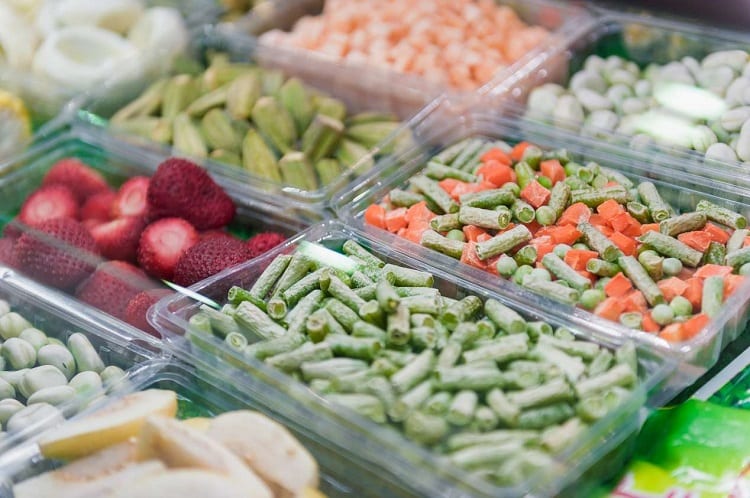
With some foods, you can’t avoid the reality that they have to be chilled or frozen in order to be preserved.
The reason that we worry about the associated risk is because power grid attacks aren’t exactly a sci-fi fantasy. They’re already happening. The last thing we want is for our food to spoil while waiting for the lights to go back on.
If you have a backup generator in your homestead during a SHTF situation, or you’re using solar power and energy banks to store energy, chilling and freezing food is still a good idea.
If you’re doing this, I trust you understand how to calculate power requirements and prioritize appliances and electrical uses in your home when you’re not connected to a standard power grid. We’ll go over some power requirements right now just to cover all the bases.
Power Requirements
Cooling and freezing your foods require different power consumption, so we’ll cover both of them so you know what to expect.
I don’t know what system you’re using in your homestead or home to self-regulate electricity (wind, solar, etc.), but you should make sure these systems are up to the challenge before relying on them fully.
Cooling Power Requirements
You have to remember that refrigerators are more advanced than they used to be. Once the ambient (air) temperature reaches a certain threshold, which is usually below 41°F, the refrigerator will actually temporarily cut power to the cooling unit, which is a good thing.
This means that as long as the ambient temperature stays around the same level, it doesn’t need to draw more power to continually cool things down until that temp goes up.
For this, you can expect to run about 0.80 kWH every day, equating to around 300 kWH per year. You’ll find a price on your electricity bill per kWH to help you calculate your expected costs.
Freezing Power Requirements
Freezer power requirements tend to do the same thing, except since we’re going for a lower temperature.
It will still power down just like a refrigerator when it reaches that ambient temperature, but it can run around 450 kWH up to 900 kWH depending on the Energy Star rating, selected temperature, and total cubic footage.
Passive Cooling Methods
Passive cooling is not when you directly pop something hot into the refrigerator or freezer. In fact, it’s quite the opposite. With passive cooling methods, you’re slowly bringing down a food’s temperature until it can be stored properly.
This still brings it down faster than if you just left it out at room temperature, which is done like this because of safety reasons and complying with the FDA four-hour rule.
Pot-in-Pot
Pot in pot is actually a cooking method, but it can be used for passive cooling after you’re done cooking food in it. Pot in pot is exactly what you think it is: a pot inside of a pot.
That level of pot-ception works by having the outer unit, water inside of it, and the next pot resting in that water. The food sits inside the interior pot, and in cooking, it’s heated by that surrounding water as it heats up.
However, you can use this as a cooling method in the same way. Place it into a bowl with ice-cold water, or fill up the base of an Instapot with cold water, then place your food bowl inside of that. Make sure you use a heavy enough bowl (glass or metal) that it’s not going to flip over.
Evaporative
The most common example to evaporative food I can think of is evaporated milk, which is very direct and explanatory. It’s the process of removing some water content from food, usually not reaching more than 70%, to thicken certain foods.
Since we know that moisture is what breeds bacterial growth in food, evaporative foods can withstand shelf storage for much longer.
That, and it helps to make food so much more enjoyable. Think of a food you love, and then picture the evaporated form as being more potent and flavorful. It preserves and enhances so many foods.
Radiant Cooling
Radiant cooling is when a surface is temperature-controlled. We most commonly see this in homes that have heated floors. Radiant cooling in food is usually done in controlled environments.
This is a low-moisture way of taking hot food, spreading it onto a cold plate, and using radiant cooling to quickly bring the food down to temperature. An example of this is when you go into an ice cream shop, and they mix toppings into your ice cream on these frozen stones.
They do that to keep your ice cream temperature perfect while they manipulate and move it into place. You can have electric radiant cooling, or buy those chill stones and use them instead. It’s up to you.
How Effective is Vacuuming at Preserving Food?
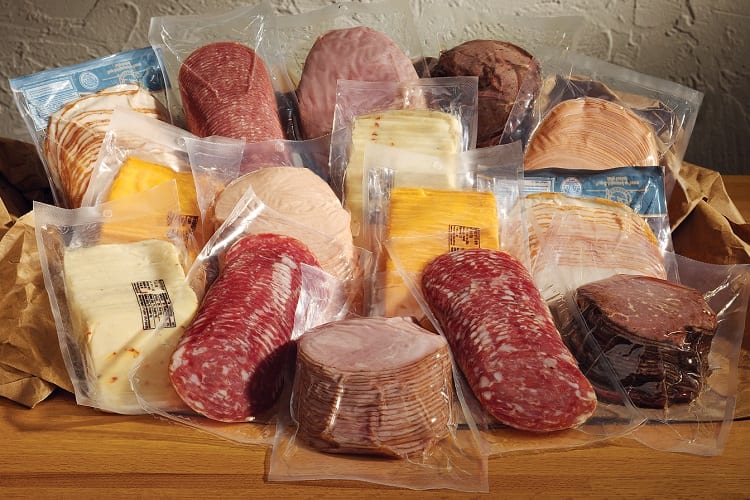
It’s excellent… if you do it right. If you can’t get a proper seal on it, then it’s basically the same as storing it in a Ziplock bag and throwing it in the pantry. There are some caveats to vacuum-sealed food.
When you vacuum seal food, you’re removing all the air from the packaging. It’s important to note that you’re not removing the water, just the air.
What this does is remove oxidation as a contributing factor for food spoilage. When oxygen touches your food for long enough, it begins to oxidize the food, causing bad flavors, questionable smells, and contributing to the growth of bacteria.
If you vacuum seal food properly, it can last for years to come.
That being said, food is still susceptible to temperature changes, especially since the moisture is still trapped inside of your food. Temperature changes can cause rapid deteriorating without the presence of oxygen (although it may be slightly delayed).
Your vacuum sealed food should be stored in a refrigerator or a freezer. What this method does is basically lock in moisture, flavor, nutrients, and prolong the shelf life of this food. The most common foods to be vacuum sealed are meats, fish, poultry, and vegetables that may spoil soon.
What is the Best Method to Preserve Nutrients Such as Vitamins or EFA?
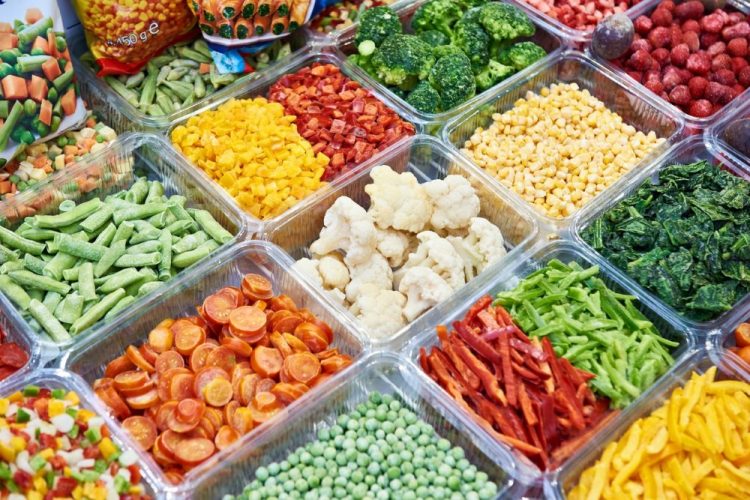
Freezing would be your best bet in this case. While other methods, such as pickling and fermentation, will alter the different flavors of the food and change its composition, freezing food doesn’t require a brine. It takes what’s already in the food and locks it into place.
One of the biggest reasons that we lose nutrients in food is through cooking it in too much moisture.
The reason I mention that is because when we unfreeze vegetables, we often throw them into other dishes instead of cooking them on their own with no additional water.
You might boil broccoli or steam snap peas, but when you introduce all that moisture, you’re actually losing more nutrients. It’s like watering down the nutrient-dense content of the vegetables.
Cooking your vegetables, or any food really, in its own trapped moisture before introducing it into another part of the dish.
When you remove food from frozen storage like this and throw it right into another pan of food, you might get excess moisture in the pan (which was contained in the frozen food). That’s okay because it will cook down, and as long as you don’t add anything extra, the nutrients and vitamins should stay put.
It’s best to thaw your food in the refrigerator before using it, even if it is vacuum sealed, so can expect the moisture content in the bag when you include it in a dish.
Preserving Your Future
We don’t know when an emergency will happen, and as much as we’d like to think that life will quickly bounce back, we truly don’t know. It’s important to be able to handle yourself for as long as possible.
Canning, pickling, there’s a ton of ways to prepare and store your food. Learn more methods, and you’ll be able to be picky when it comes to preferences (I’m not a fan of fermentation, for example). You’ve got this.


Great advice. Definitely will heed it.
I like how you referred to food storage as “food insurance”. My wife and I are building up our food storage supply for emergencies. Thank you for the information on why food storage is so important.